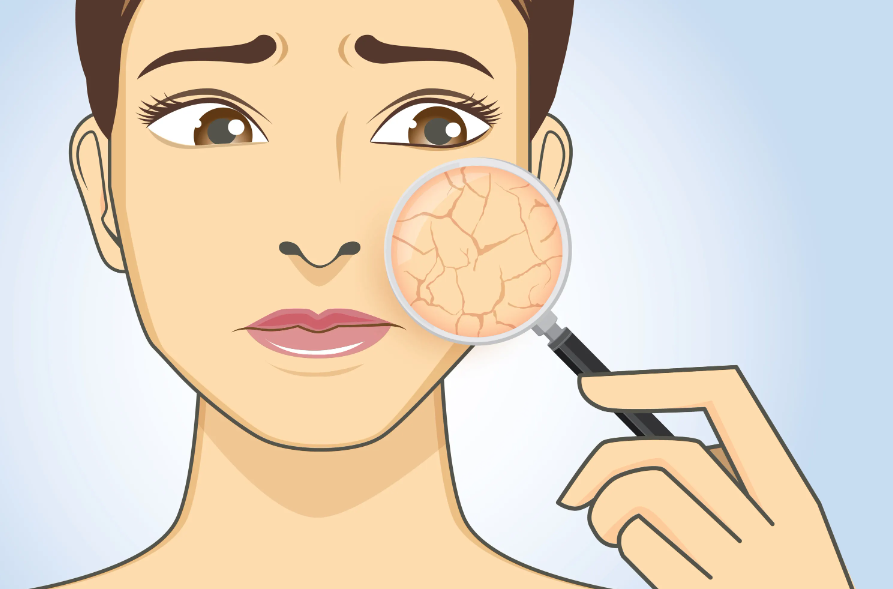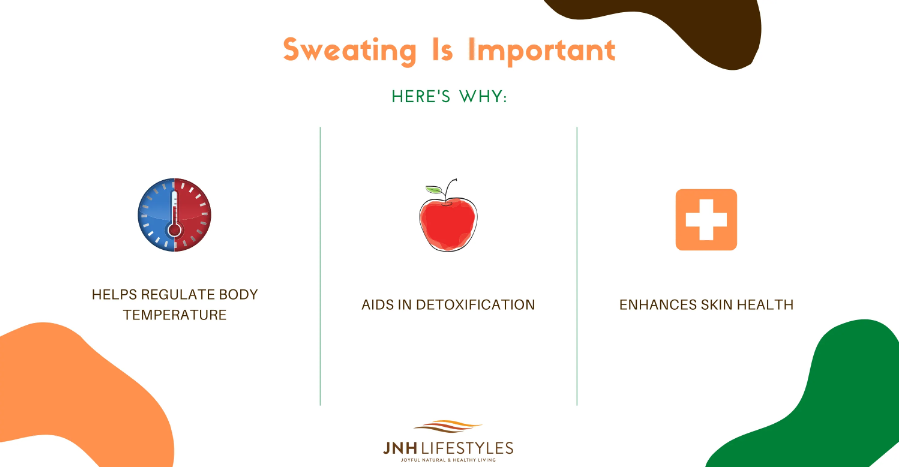Why Sweating Is Good for You

By: Your JNH Lifestylist
Sweat can be annoying to some people but there is no way of denying its health benefits. These have been talked about for years so there is no reason to avoid it. In most cases, what causes us to sweat are either physical exercise or very warm environments. However, in the last couple of years, there has been a surge in a new way of inducing sweat. Infrared saunas have taken the world of wellness by storm, and people can't stop raving about them and their many benefits. In this article, you will find everything you need to know about the benefits of sweat and how an infrared sauna can help.
Thermoregulation
The main reason why sweating is good for you is that it helps regulate your body temperature. Our bodies have to maintain a specific temperature range to work properly and survive. This temperature must not change drastically even when the environment that surrounds us does. When you are in a warm environment, or you are exercising, your body needs to find a way to cool down. Otherwise, your body temperature would spike and this could cause many problems. One of the ways how the body achieves this is through sweat. Sweat glands carry out evaporation to the epidermis, which is the most superficial layer of the skin, to release heat. Despite being such an important regulatory process, it is important to stay hydrated when it happens [1].

Photo by Josh Rakower on Unsplash
It Helps You Detox
Every single day, chemicals enter our bodies. These come from the food you eat, what you drink, the air you breathe and from all over the environment. Some of these chemicals are not beneficial to your body and their build-up over time can cause some health issues. However, there are many ways to get rid of these chemicals and sweating is one of them. Studies have shown that arsenic, cadmium, lead and mercury are excreted through sweat. These are confirmed probable carcinogens and have adverse effects on the nervous, endocrine, renal, immune system as well as your cardiovascular health [2].
These are not the only chemicals that sweat helps you get rid of. Phthalates are chemical compounds that are in countless products we use every day, such as shampoo, deodorants, fragrances, nail polish and even medical devices. Thus, it is very easy to reach high concentrations of these toxins in our bodies. In the last years, these chemicals have been reported to not be as harmless as we used to think. The main concern with them is that they can act as endocrine disruptors. This means that they can cause hormonal imbalances in your body, especially in children, affecting the development and function of reproductive organs. Thankfully, it has been proven that induced sweating can help reduce these levels [3].
It Can Improve Your Skin
First of all, sweating can help you open your pores and flush out all the oil and toxins that have built up inside them. This will result in unclogged pores and fewer chances of getting pimples [4]. Sweat can also be very beneficial for people with oily skin since it reduces the production of oil by your sebaceous glands. Thus, if you are looking for less oily skin just sweat it out. This doesn't just interest people with oily skin since numbing your sebaceous glands can also be a wait to control your acne [5]. Finally, sweat isn't just water. It has many different substances and one that has caught the attention of scientists lately is dermcidin. This molecule is a natural antibiotic produced by your body and released through sweat that has great activity against many types of multi-resistant bacteria. Hence, sweating can help you prevent skin infections and acne since this last condition can also be caused by bacteria [6]

An Infrared Sauna Can Help You Sweat It Out
After learning about all these health benefits that come from sweating it would be a sin not to take advantage of them. For some people, exercising is enough to sweat, but for those who need an extra push or would like to complement their workout sessions, infrared saunas can be a great option. These differ from traditional saunas in that they don't heat the air around you to heat your body. They work using infrared radiation which is a type of invisible light that can transfer heat. By not heating the air, they are much more bearable since the room temperature is lower than a regular sauna. Also, the infrared radiation penetrates deep into your skin and tissues, which will make you sweat profusely. Finally, you won't just get the benefits from sweating, but also the ones from infrared therapy which include regulation of your sleep cycle, boosting up your immune system, among countless others [7].
As you can see, sweat shouldn't be considered undesirable. Just look at all the benefits it has for your health. Don't think twice and try an infrared sauna to start getting the benefits from both sweat and infrared radiation.

Resources:
[1] Osilla Eva, Sharma Sandeep. (2019). "Physiology, Temperature Regulation." Ncbi.nlm.nih.gov, National Center for Biotechnological Information, March 16, 2019, https://www.ncbi.nlm.nih.gov/books/NBK507838/
[2] Sears Margaret, Kerr Kathleen, Bray Riina. (2012). "Arsenic, Cadmium, Lead and Mercury in Sweat: A Systematic Review.” Ncbi.nlm.nih.gov, National Center for Biotechnological Information, February 22, 2012, https://www.ncbi.nlm.nih.gov/pmc/articles/PMC3312275/
[3] Genius Stephen, Beeson Sanjay, Lobo Rebecca, Birkholz Detlef. (2012). "Human Elimination of Phthalate Compounds: Blood, Urine, and Sweat (BUS) Study." Ncbi.nlm.nih.gov, National Center for Biotechnological Information, October 31, 2012, https://www.ncbi.nlm.nih.gov/pmc/articles/PMC3504417/
[4] Griffiths Jessica. (2017). "Are Saunas Good for Your Skin? Here's What We Found Out." Dermstore.com, Dermstore, August 22, 2017, https://www.dermstore.com/blog/are-saunas-good-for-your-skin/
[5] Kowatzki D, Macholdt C, Krull K, Schmidt D, Deufel T, Elsner P, Fluhr JW. (2008). "Effect of regular sauna on epidermal barrier function and stratum corneum water-holding capacity in vivo in humans: a controlled study." Ncbi.nlm.nih.gov, National Center for Biotechnology Information, 2008, https://www.ncbi.nlm.nih.gov/pubmed/18525205
[6] Song Chen, Weichbrodt Conrad, Salnikov Evgeniy, Dynowski Marek, Forsberg Bjorn, Bechinger Burkhard, Steinem Claudia, de Groot Bert, Zachariae Ulrich, Zeth Kornelius. (2013). "Crystal structure and functional mechanism of a human antimicrobial membrane channel." Pnas.org, Proceedings of he National Academy of Sciences of the United States of America, March 19, 2013, https://www.pnas.org/content/110/12/4586
[7] Shui S, Wang X, Chiang JY, Zheng L. (2015). "Far-infrared therapy for cardiovascular, autoimmune, and other chronic health problems: A systematic review." Ncbi.nlm.nih.gov, National Center for Biotechnological Information, October 2015, https://www.ncbi.nlm.nih.gov/pubmed/25716016

